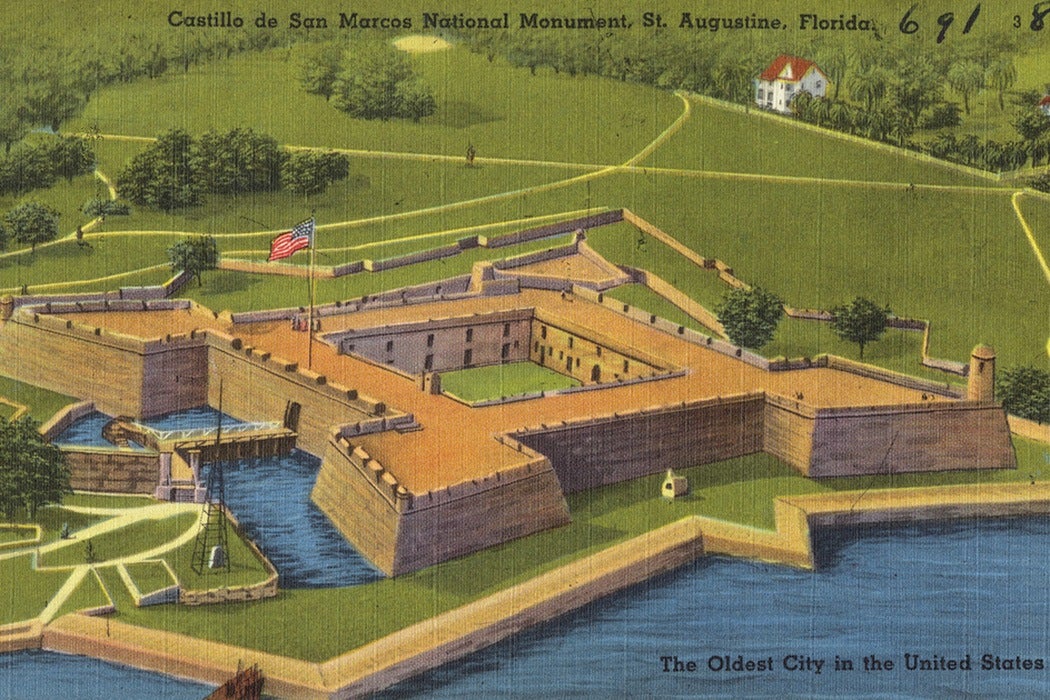The first European settlement in the United States? That title often erroneously goes to Jamestown, Virginia, the first British permanent settlement, founded in 1607.
Yet by the time Jamestown was founded, the oldest city in what is now the U.S., St. Augustine, Florida, in the northeast corner of the state, was already 42 years old. The story of that settlement provides American history with a Spanish lilt.
The area of St. Augustine was first claimed for Spain by Juan Ponce de León, the explorer who first spotted Florida on April 2, 1513. But the real Spanish connection to Florida doesn’t establish itself until 52 years later, when a contingent under the command of Pedro Menéndez de Avilés founded the settlement.
Menéndez de Avilés set sail from Spain with about 2,000 others, including 1,000 soldiers and some 200 sailors, as well as an estimated 100 wives and 150 children. Before he ever landed, there were massive defections; more than 500 left the expedition after a stop in Hispaniola. Of the total number of men that reached St. Augustine with Menéndez de Avilés, only a contingent of about 70 could be left at the site.
St. Augustine struggled. The Spaniards brought with them diseases such as smallpox and measles which devastated the local Timucua Indians. It developed into a cosmopolitan little town, however, and soon its residents included Minorcans, Native Americans (mostly women who married the Spaniards and converted to Catholicism), Africans (both slaves and free people), French, and Germans. St. Augustine was under constant threat from outside enemies, both indigenous and European.
In 1586, Sir Francis Drake, the British pirate, landed and sacked the settlement. Nearly a century of conflicts and raids convinced the Spanish that a strong fort was needed at St. Augustine. In 1672, the Spaniards began construction on the Castillo de San Marcos, creating the fort as a barrier to enemies. The structure still stands today.
St. Augustine survived and became a haven for those fleeing British tyranny, from escaped slaves to British Catholics who found a refuge there. But the far-flung Spanish Empire had difficulties maintaining its North American outpost; for a short time, the settlement fell into the hands of the British. During that brief period, St. Augustine was made the capital of British East Florida. Spain regained control but in 1819, Spain ceded Florida to the United States.
Once a Week
St. Augustine is now a small city of about 14,000, its Spanish heritage part of its tourist charm. Excavations under the town conducted by the University of Florida revealed artifacts indicating its emergence as a multi-cultural settlement, with roots in Spanish, Native American, and African culture, a microcosm of what would later develop into the wider culture of the United States. By contrast, Jamestown, despite all its vaulted place in American history, fell on hard times and eventually withered away.
Editor’s Note: This post has been updated for clarity and to correct the name of the founder of St. Augustine, which was incorrectly written as Martinez de Aviles.







